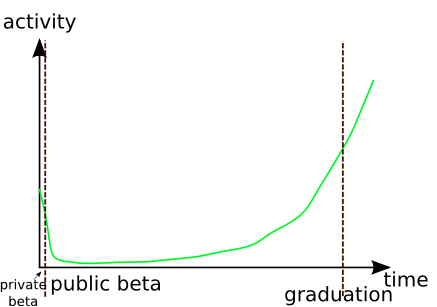I've been involved with matheducators.stackexchange.com and a little bit with expatriates.stackexchange.com. I've noticed that both had very high activity during private beta and then about half as much activity during public beta (which makes sense, because people are trying to get the site going during private beta).
However, I've noticed that many other, older beta sites have a large number of questions but few questions/day. I assume that they, too, grew fast at the beginning and then slowed down.
My question is, what is the typical pattern in terms of questions and answers per day in the typical new beta site? Do they tend to follow the same statistical model? Most importantly, is there a difference between those that succeed and those that fail, or does it not show up until later?
I'd like to know so that if and when the questions slow down, we'll have some perspective on what is normal and what is not.





